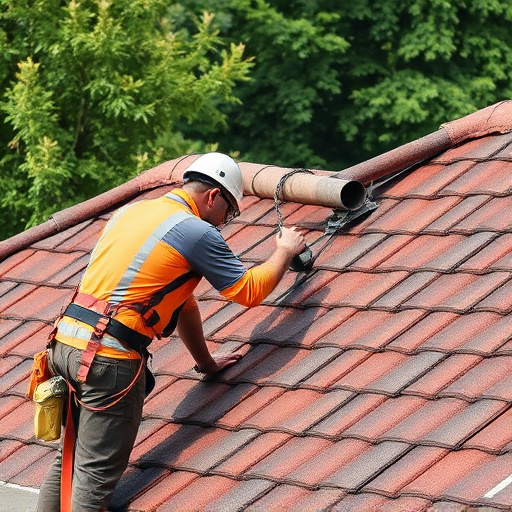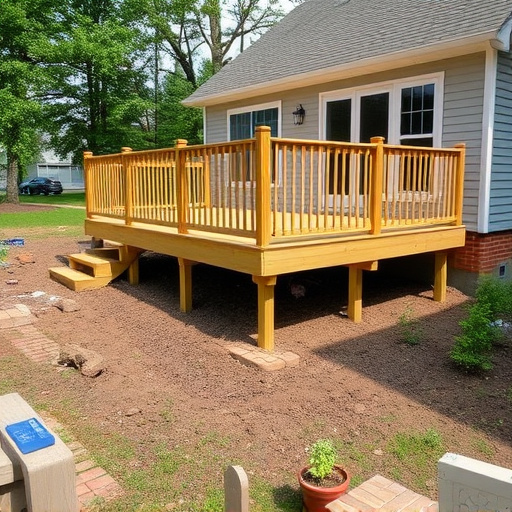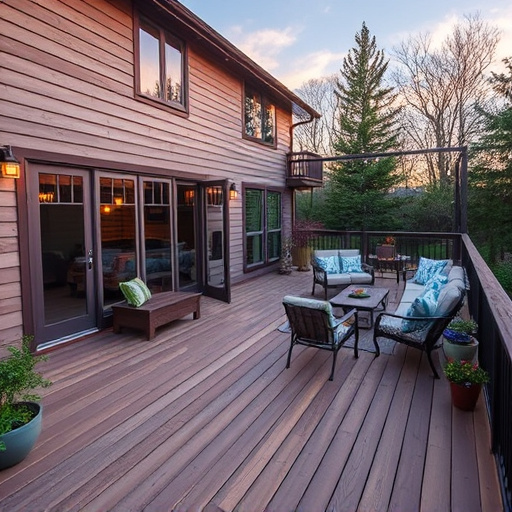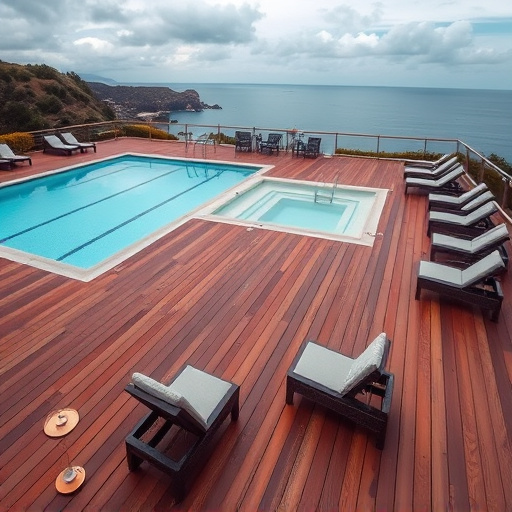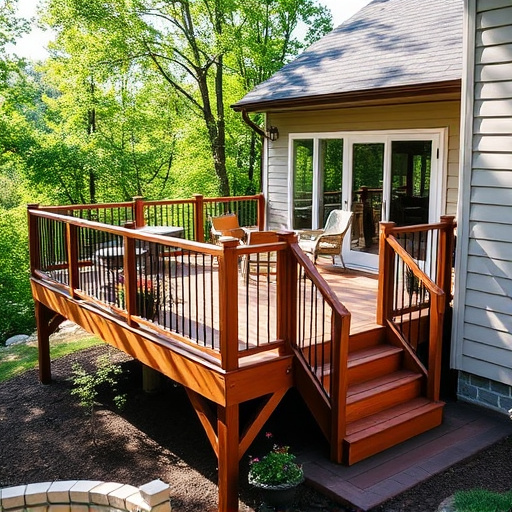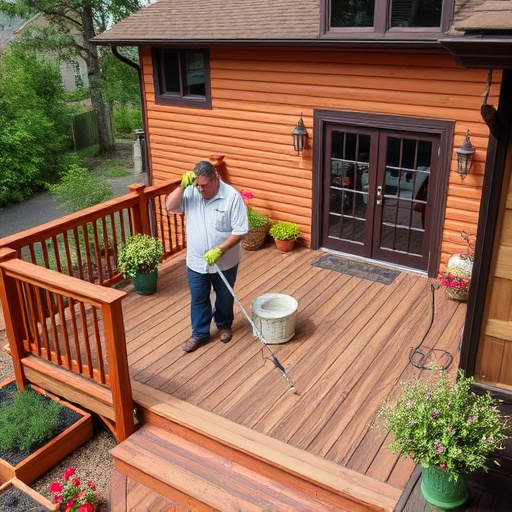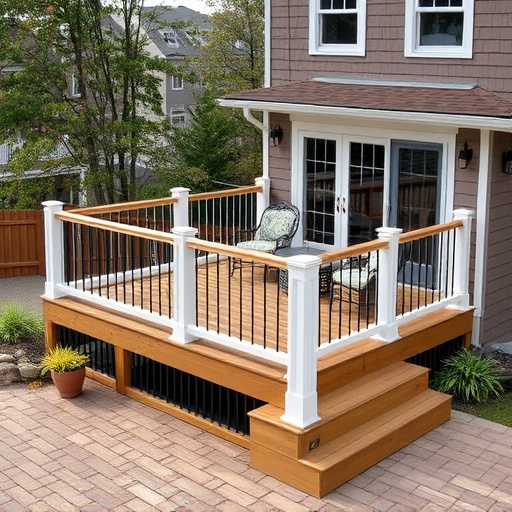Composite and PVC decks are popular for their durability, low maintenance, and versatility in design. Planning is crucial, including space assessment, local code compliance, and detailed measurements. For complex designs, professional expertise ensures quality. Installation involves preparing a level area, laying foundation, attaching boards, and adding siding & gutters for water management, especially important with deck materials like PVC used in commercial settings.
“Elevate your outdoor space with composite or PVC deck materials—a durable and low-maintenance upgrade. This comprehensive guide offers invaluable insights into transforming your backyard. From understanding the benefits of these innovative deck options to a detailed step-by-step assembly process, we’ll navigate you through every stage.
First, grasp the fundamentals: what sets composite and PVC apart? Then, learn the secrets of successful planning and preparation. By following these tips, you’ll be well-equipped to install a sturdy and visually appealing deck.”
- Understanding Composite and PVC Decks
- Planning and Preparation for Installation
- Step-by-Step Guide to Successful Deck Assembly
Understanding Composite and PVC Decks
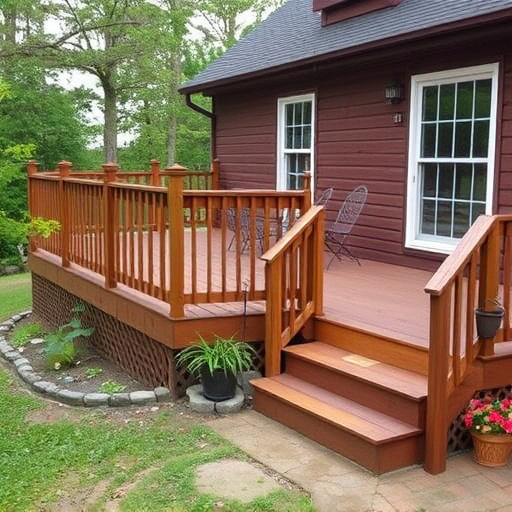
Composite and PVC decks are two popular choices for outdoor living spaces, offering a range of benefits that make them stand out from traditional wooden decking. Composite deck materials are made from a blend of wood fibers and plastic, creating a durable surface that requires little maintenance. On the other hand, PVC (polyvinyl chloride) decks provide an even more low-maintenance option, as they’re entirely synthetic and resistant to rot, warping, and fading. Both types offer excellent resistance to harsh weather conditions, making them ideal for both residential and commercial siding applications.
When considering deck materials, it’s crucial to understand the unique features of composite and PVC decks. Composite decking is known for its versatility, available in various colors and styles that can mimic the look of natural wood. Meanwhile, PVC decks excel in terms of slip resistance and noise reduction, making them an excellent choice for areas requiring safety and peace. Whether you’re planning a deck replacement or looking for roof repair alternatives, these modern deck materials offer both aesthetic appeal and long-lasting performance.
Planning and Preparation for Installation
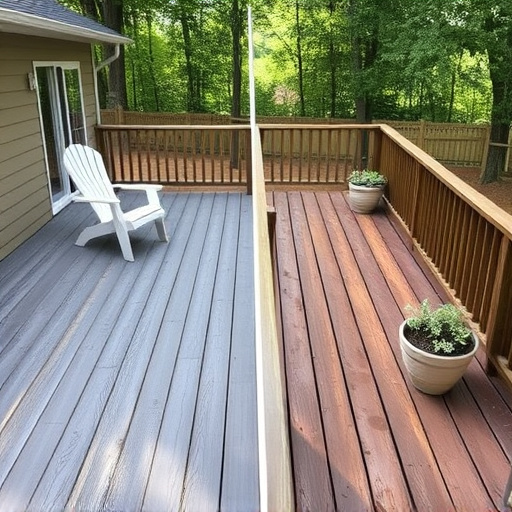
Before beginning the installation process, thorough planning and preparation are essential for a successful deck project. Start by evaluating your space and deciding on the layout and design of your deck. Measure the area to be covered and consider factors like sunlight exposure, shade, and proximity to nearby structures or landscapes. Create detailed plans, including measurements and specifications for the deck’s structure, railings, and any additional features like stairs or built-in seating.
Clear the site thoroughly, removing any debris, plants, or obstacles that might interfere with construction. Ensure proper drainage in the area to prevent water damage. Check local building codes and regulations regarding deck installation, especially when using composite or PVC materials, as these may have specific requirements for residential siding or roofing. Professional siding expertise can be beneficial for complex designs or larger projects, ensuring a neat finish and structural integrity.
Step-by-Step Guide to Successful Deck Assembly
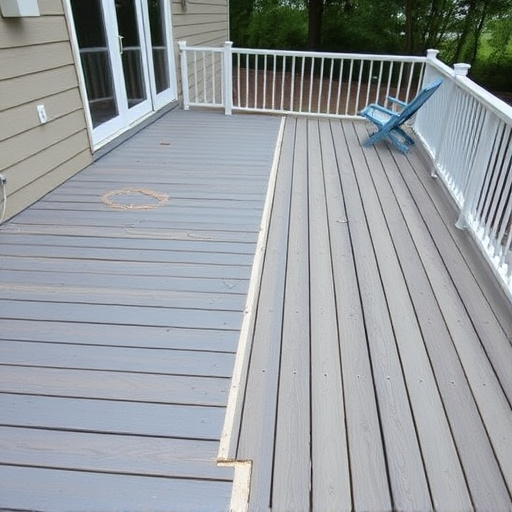
To ensure a successful deck assembly using composite or PVC deck materials, follow this step-by-step guide. First, prepare your work area by ensuring the deck surface is clear and level. This involves removing any debris, old siding, or gutters, making sure the foundation is solid and even. Next, measure and mark the layout of your deck, considering the specifications of your chosen deck materials to ensure precise cuts.
Begin by installing the foundation, typically using joists or beams, ensuring they are securely fastened according to manufacturer guidelines. After the foundation is in place, attach the deck boards, either composite or PVC, following the recommended spacing and fastening methods. For a neater finish, consider incorporating siding and gutters, aligning them with your deck’s design for both aesthetic appeal and functional water management. This step is especially important if you’re opting for a commercial siding solution to enhance the durability of your deck over time.
When it comes to installing composite or PVC deck materials, proper planning and a systematic approach are key. By understanding the unique characteristics of these materials, preparing your space effectively, and following a detailed step-by-step guide, you can create a durable and aesthetically pleasing outdoor living space. Remember, with the right tools, knowledge, and attention to detail, installing your dream deck is within reach.



